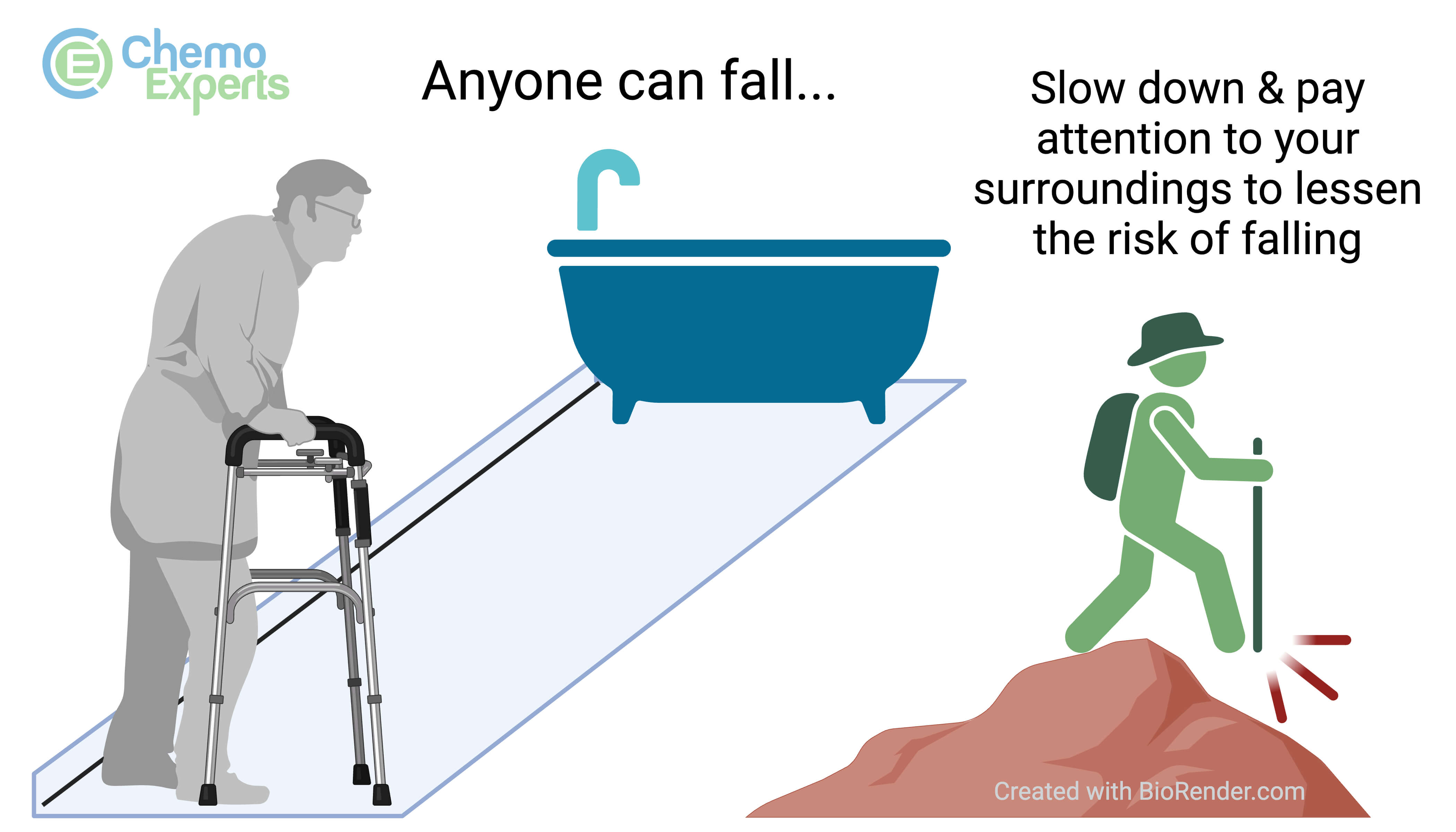Side Effect: Increased Fall Risk
What does an increased risk of falling mean?
An increased risk of falling refers to an individual's likelihood of experiencing a fall due to various factors such as age, medical conditions, medication use, and environmental factors. Falls can lead to bone fractures, head injuries, and are a major cause of increased morbidity and mortality.
Increased Fall Risk

Click to enlarge
You can do things to help prevent falling:
- Put things away to remove tripping hazards
- Add grab bars in the shower or bathtub area
- Improving lighting in walkways
- Clear the pathway to the bathroom before going to bed at night.
- This way there won’t be anything to trip over when it’s dark if you get up in the middle of the night to go to the bathroom.
Who is at an increased risk of falling?
Patients who have a history of falls, had an extended hospitalization, who need assistance performing daily activities, and who live alone are at an increased risk of falls. Patients with. cancer may have an increased risk of falling due to various reasons such as increased fatigue, poor physical condition, drowsiness caused by chemotherapy or supportive care medications, and radiation.
Additionally, dizziness can occur when certain cancers move to the brain and cause swelling.
Sedating meds, including gabapentin (Neurontin) which is used for pain, as well as antihistamines such as diphenhydramine (Benadryl) which is commonly used for insomnia or itching, and another antihistamine which can be taken for anxiety or itching all have the potential to increase the risk of falling shortly after taking these medications.
How do I prevent myself from falling?
To prevent falls, it is essential for patients with cancer to assess and manage fall risk factors. This can include screening for falls using standardized tools, evaluating medication use, treating underlying medical conditions that can contribute to falls, and implementing exercise and balance training programs.
Additionally, modifying the environment to reduce fall hazards such as removing tripping hazards, adding grab bars, and improving lighting can also be beneficial. An easy way to prevent falls is to clear the way to the bathroom before going to bed at night. This way there won’t be anything to trip over when it’s dark if you get up in the middle of the night to go to the bathroom.
While in the hospital, a multidisciplinary approach involving healthcare providers, physical therapists, and caregivers can be useful in preventing falls in both in the hospital, and at home when the patient is discharged from the hospital.
Created: January 24, 2024
Updated: March 3, 2024

